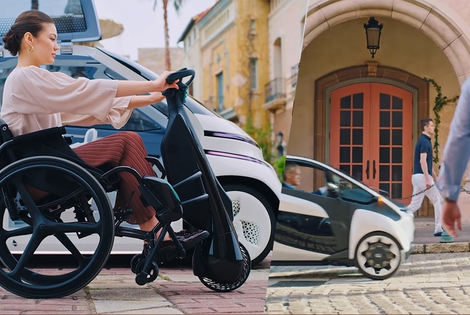
Milan has announced one of Europe’s most ambitious mobility schemes, known as Strade Aperte (open roads). Its goal is to reduce cars in phase 2 of the lockdown by increasing bike lanes and pedestrian areas.
The opportunity of building cycle superhighways, as the one planned for London, has been recently discussed and they will likely be a future trend. However, in South Korea, a cycle superhighway has been built in the middle of a motorway About 30 km long, the route links Daejeon (South Korea’s fifth largest metropolis) with
The opportunity of building cycle superhighways, as the one planned for London, has been recently discussed and they will likely be a future trend. However, in South Korea, a cycle superhighway has been built in the middle of a motorway
About 30 km long, the route links Daejeon (South Korea’s fifth largest metropolis) with Sejong, a city built to house some government buildings.
The city took its name from King Sejong the Great, the father of the Korean alphabet. It aims to become a model for sustainability in Asia (as it is explained in Sejong, Asia’s Green metropolis of the future report) and the cycle superhighway in the middle of a motorway can be rightfully included among the several steps leading to the fulfilment of this goal. It is covered with several photovoltaic panels helping produce sustainable energy. The solar panels’ roof gives shelter to cyclists in case of rain too.
This video provides a bird’s-eye view of the superhighways with photovoltaic panels, thanks to the shooting realized by a drone. Another video was posted on Facebook showing the cycle superhighway beneath the photovoltaic panels.
The cycle superhighway belongs to a larger projects aiming to build 350 km of cycle routes around Sejong.
In any case, the area obtained in the motorways allowed keeping three lanes for cars and one lane for other means of transport, such as coaches, for each direction of travel. In case of positive results, this project might be realised elsewhere. Actually, someone has already suggested to build in the United States too cycle superhighways similar to the one realised in South Korea
Siamo anche su WhatsApp. Segui il canale ufficiale LifeGate per restare aggiornata, aggiornato sulle ultime notizie e sulle nostre attività.
![]()
Quest'opera è distribuita con Licenza Creative Commons Attribuzione - Non commerciale - Non opere derivate 4.0 Internazionale.
Milan has announced one of Europe’s most ambitious mobility schemes, known as Strade Aperte (open roads). Its goal is to reduce cars in phase 2 of the lockdown by increasing bike lanes and pedestrian areas.
Formula 1, the world’s most important auto racing championship, has decided to turn the page and aim for carbon neutrality with the support of its teams, drivers and the whole racing circus.
Toyota and LifeGate began telling the story of hybrid mobility back in 2006, now, on the road to the Tokyo 2020 Olympics, they’re still treading the path of sustainable mobility. Here are the main steps of the journey.
Germany’s first solar bicycle lane could be the prototype for the roads of the future. The photovoltaic tiles melt snow and ice, and are capable of absorbing noise.
The Vespa is back in an electric version. Production has just started and the first models can be reserved online starting from October.
The city of Utrecht, in the Netherlands, is home to a bridge for cycling and walking that stretches over roof garden of a Montessori school. This project enhances practicality and will allow families to bring children to school by bike, passing through green areas. Despite their functionality, bridges are often seen as an infrastructure that is
The Lego hair bike helmet is the latest Internet craze. For now it’s just a prototype but production on a large scale will probably start soon.
Just as fires often give way to new growth, after the Dieselgate scandal, which saw Volkswagen cheating on US emission rules, the German car manufacturer radically changed course, beginning to focus on sustainable mobility. The German car company aims to propose thirty zero-emission models and produce at least one million battery electric vehicles by 2025. An ambitious mission
Sustainable, two-wheel mobility is triumphing in Copenhagen. After years of investments, policies, and infrastructural changes, bikes now outnumber cars in the city centre. The website Copenhagenize has released data linked to the number of vehicles entering the city centre, which are monitored by the city’s administration on a daily basis. Last year, 265,700 bikes have entered







